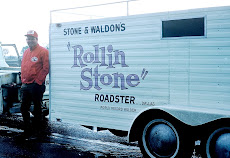




Friday, August 6th, is the sixty-fifth anniversary of
the bombing of Hiroshima, Japan. It was the first time
the atomic bomb had been used and the amazing aftermath
is still being analyzed today. The Germans had already surrendered
to end World War II in Europe, but the Japanese still fought
on. At the Potsdam meeting, Britain's Winston Churchill, Russia's
Joseph Stalin, and America's Franklin D. Roosevelt met to discuss
how the post-war years would be set. At this meeting Roosevelt
told Churchill and Stalin that America had invented a weapon
that was beyond description with devastating results. Churchill
knew about the weapon since the English had assisted America
with the bomb. Stalin simple nodded as if he was unimpressed with
the latest bomb. American planes daily flew over Japanese cities to
implore the Japanese Empire to surrender or 'face weapons never
seen by mankind before'. After Roosevelt's death, then President Harry Truman was advised that to invade the Japanese homeland would cost American casualties nearing a quarter million lives. The new President never hesitated when informed about the new weapon. On August 6, 1945 three B-29 bombers took off from the tiny island of Tinian in the Pacific and headed for Japan. The skies were clear and visibility was unlimited as the planes
crossed the Japanese coastline. Hiroshima was chosen because of the Mitsubishi engine plant located there. The lead plane, the Enola Gay, was piloted by Colonel Paul Tibbets. The other two planes were there for observation and photographic evidence. The Enola Gay was carrying only one bomb and it was called "the Little Boy". It carried enough punch to equal 20,000 bomb loads of regular bombs. At eight o'clock in the morning Hiroshima suffered the fate of the first atomic blast. It was detonated 2,000 feet over the city and 85,000 people were killed instantly. Over the next
three months another 45,000 died of radiation poisoning. Deaths over the next three years that could be attributed to the atomic blast brought the total to 247,000 deaths. The Japanese Military Command in Tokyo saw the communication line to Hiroshima broken and attempts to connect were unsuccessful. An observation plane was dispatch to Hiroshima to see what the problem was. The officer on the plane radioed back 'Hiroshima is no longer here'. The United States communicated with Japan, but no surrender offer was received even though threats of more bombs of this magnitude could be expected. Three days later on August 9th, 1945 a second atomic
bomb was dropped on the city of Nagasaki with similar results. The Japanese agreed to 'unconditional surrender' and World War II was finally concluded. August 15th the Japanese boarded the U.S. Battleship Missouri in Tokyo Bay and signed the terms of surrender. These two Japanese cities are the only victims of atomic power after 65 years and today both are beautifully rebuilt.



No comments:
Post a Comment